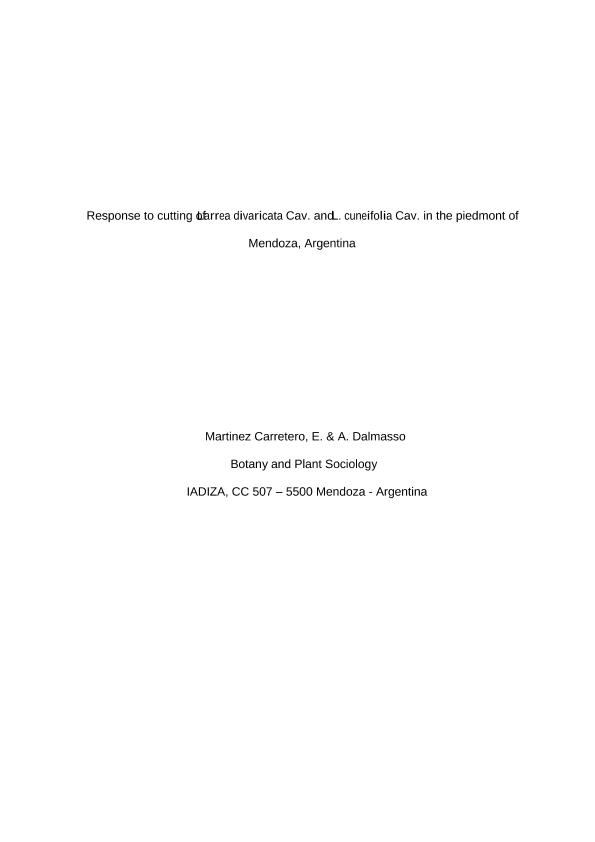Artículo
Response to cutting of Larrea divaricata and L. cuneifolia in Argentina
Fecha de publicación:
02/2002
Editorial:
Wiley Blackwell Publishing, Inc
Revista:
Applied Vegetation Science
ISSN:
1402-2001
Idioma:
Inglés
Tipo de recurso:
Artículo publicado
Clasificación temática:
Resumen
The response of Larrea divaricata and L. cuneifolia to cutting stems 0-20 cm above the ground was studied in the arid piedmont area west of Mendoza, Argentina. The species occur at different elevations and in vegetation zones: L. cuneifolia < 1250 m; L. divaricata between 1250 and 2500 m. Four treatments with 10 replicates were analysed in randomly chosen plants: cut at ground level with lopping shears; cut at ground level with a pick; cut at 10 cm with lopping shears; and cut at 20 cm with lopping shears. The initial and final height, volume, and dry matter (above- and below-ground) were determined. The relation between volume and initial and final dry matter and height was analysed through a factorial MANOVA (p < 0,05), and the functional relation between volume, dry matter and height was estimated by adjusting a regression model. In both species, maximum recovery was reached when cut with shears, and predicted recovery (turnover) was 17-18 yr. In the two last treatments height was a useful predictor of dry matter. L. divaricata-dominated plots have a lower biomass, growth rate, and allocation to stems and root than L. cuneifolia-dominated plots. Regrowth following clipping on an area of 3-10 ha, is sufficient to support the annual needs (cooking and heating) of one family.
Archivos asociados
Licencia
Identificadores
Colecciones
Articulos(IADIZA)
Articulos de INST. ARG DE INVEST. DE LAS ZONAS ARIDAS
Articulos de INST. ARG DE INVEST. DE LAS ZONAS ARIDAS
Citación
Martinez Carretero, Eduardo Enrique; Dalmasso, Antonio Daniel; Response to cutting of Larrea divaricata and L. cuneifolia in Argentina; Wiley Blackwell Publishing, Inc; Applied Vegetation Science; 5; 1; 2-2002; 127-133
Compartir
Altmétricas




